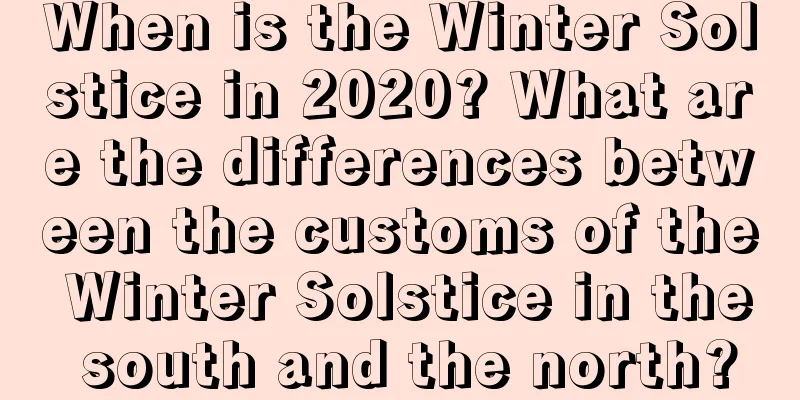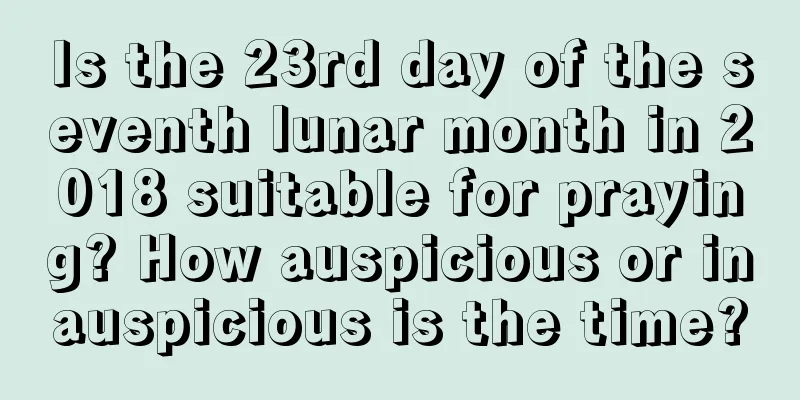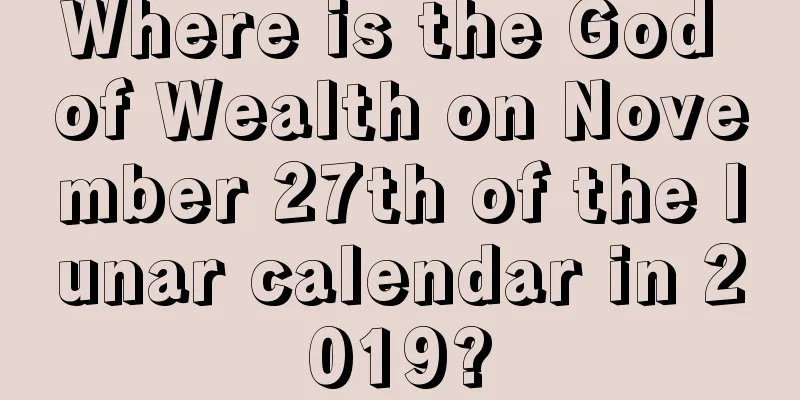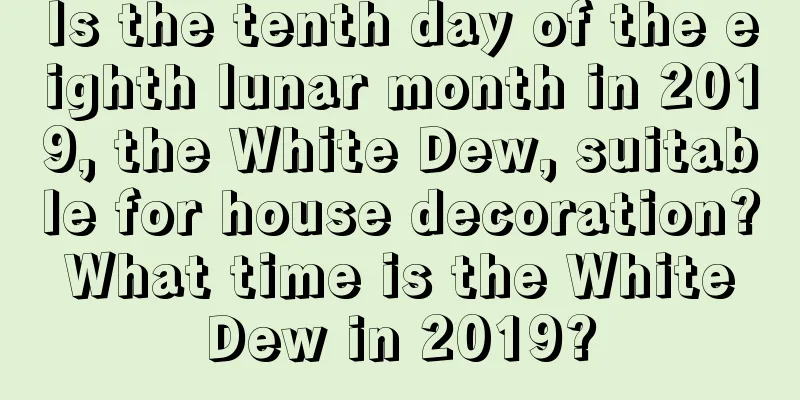When is the Winter Solstice in 2020? What are the differences between the customs of the Winter Solstice in the south and the north?

The Winter Solstice is an important solar term in the Chinese lunar calendar and one of the traditional festivals of the Chinese nation. It is also known as the "Nine-Nine Days of Winter Festival", the "Longest Day Festival" and the "Sub-New Year". So when is the winter solstice in 2020? What are the differences between the customs of the Winter Solstice in the south and the north? In addition to eating glutinous rice balls during the Winter Solstice Festival, people also use the Jiujiu Xiaohantu to pass the time. Follow Mr. Shui Mo to learn more about the customs of the eleventh month of the lunar calendar in 2020.When is the Winter Solstice in 2020?The time of winter solstice in 2020 is:December 21, 2020 18:02:12 Lunar calendar: November 7th Introduction to Winter Solstice—— On the day of the winter solstice, the sun's ecliptic longitude is 270°, and the sunlight almost directly hits the Tropic of Capricorn. The daytime in our northern hemisphere is the shortest and the night is the longest, and the coldest days of winter begin. Astronomical definition states that this day marks the beginning of winter in the Northern Hemisphere. After the winter solstice, the position of direct sunlight gradually moves northward, and the days in the northern hemisphere gradually become longer. The origin of the winter solstice According to records from the Zhou Dynasty, people used the winter solstice to worship the sky in the suburbs. Because the first month of the Zhou calendar was the eleventh month of the Xia calendar, the first month of the Zhou Dynasty was equivalent to our current eleventh month. Therefore, there was no difference between celebrating the New Year and celebrating the winter solstice. It was not until Emperor Wu of the Han Dynasty adopted the Xia calendar that the first month and the winter solstice were separated. Therefore, it can also be said that the celebration of the "Winter Festival" has only started after the Han Dynasty, flourished in the Tang and Song dynasties, and has continued to this day. During the Tang and Song dynasties, the Winter Solstice was the day to offer sacrifices to heaven and ancestors. The emperor would go to the suburbs to hold a grand ceremony to offer sacrifices to heaven, and the people would worship their parents and elders on this day. Even now, some places still celebrate the Winter Solstice. What are the differences between the customs of the Winter Solstice in the south and the north?1) Ancestor worship <br /> Many places have the custom of worshipping ancestors on the winter solstice, and at the same time they also pay respects to their parents and elders. In addition, there was also a custom in ancient times of offering shoes and socks to the elderly, which is still popular in some areas today.There is a saying in Fujian and Taiwan that "Winter Solstice is as important as Chinese New Year". All those who work outside their hometowns must rush back to their hometowns to celebrate the New Year on the Winter Solstice, which means they will have a home at the end of the year. 2) Eating Tangyuan in the South <br /> Tangyuan eaten during the winter solstice is also called "Winter Solstice Dumpling". Tangyuan can be used to worship ancestors or given as gifts to friends and relatives. During the winter solstice, old Shanghainese people are most particular about eating rice dumplings. Relatives gather together to taste newly brewed sweet white wine, flower cakes and glutinous rice balls, and then pile pieces of meat on a plate to offer sacrifice to their ancestors. 3) Eating dumplings in the north <br /> In northern China, there is a custom of eating dumplings on the winter solstice of the lunar calendar every year. As the saying goes, "On October 1, the winter solstice arrives, every household eats dumplings." This winter solstice custom is to commemorate the "medical saint" Zhang Zhongjing who gave away medicine on the winter solstice. 4) Counting the Nines <br /> People from different places have compiled various proverbs and rhymes for counting the Nines according to different climate conditions, landscape features, agricultural seasons and customs. 5) Eating dog meat and mutton <br /> On the winter solstice, there is also a custom of eating dog meat and mutton, because after the winter solstice, the weather enters the coldest period. Chinese medicine believes that mutton and dog meat have the effect of strengthening yang and replenishing the body. There is still a custom of eating tonic on the winter solstice. 6) Eating winter solstice dumplings <br /> In some areas of the south, eating winter solstice dumplings is quite popular. This custom of winter solstice is to represent family reunion. Every winter solstice morning, every household starts grinding glutinous rice flour and using sugar, meat, vegetables, fruit, beans, shredded radish, etc. as fillings to make winter solstice balls. Not only are they eaten by family members, they are also given to relatives and friends as gifts to express blessings. 7) Giving Shoes as Gifts <br /> During the winter solstice, people have the custom of giving shoes as gifts. In "China Past and Present", it is said: "In the Han Dynasty, there were embroidered mandarin duck shoes. Emperor Zhao ordered them to be presented to uncles and aunts on the winter solstice." As time went by, the custom of giving shoes to uncles and aunts gradually evolved into uncles and aunts giving shoes and hats to nephews and nieces. |
Recommend
How is the fortune of people born in the Year of the Ox during the National Day in 2020? Okay?
Speaking of fortune, I believe everyone is familia...
Is April 29th of the lunar calendar in 2018 suitable for traveling? What should I pay attention to?
Traveling is a big or small thing for people. Some...
Is it a good time for friends whose zodiac sign is horse to be born on Qingming Festival? Will you become rich and powerful?
Every friend hopes that his or her destiny is good...
Is it a good idea to get married on the second day of the fourth lunar month in 2018?
The fourth month of the lunar calendar has alread...
Is the Spring Equinox based on the lunar calendar or the solar calendar? Does the vernal equinox represent the beginning of spring?
The Spring Equinox is one of the 24 solar terms. S...
What is the meaning and nickname of the Winter Solstice, and what are the attributes of the Winter Solstice?
The winter solstice is one of the important solar ...
Is November 20th of the lunar calendar 2021 a good day to get married? Can we get married?
The choice of time to get married will also affect...
Is September 18, 2021, the Frost Descent solar term, a good day? Can I go pick up a new car?
The ninth month of the lunar calendar is the third...
What are the most common feng shui drawbacks of home layout?
Introduction: The Feng Shui of a house has always ...
What are the taboos of Cold Dew on October 8, 2019? What time, minute and second does Cold Dew 2019 start?
Introduction: Every day will have good and bad luc...
Analysis of the hexagrams and the auspiciousness and inauspiciousness of the time of the spring equinox in 2017
Introduction: Wind and thunder bring warmth into m...
Can I get married on the first day of the second lunar month in 2020? Can I get engaged and hold a wedding?
February 1st in 2020 is the first day of February...
What is the zodiac sign of a Rooster baby born on July 11, 2017 in the lunar calendar? Virgo?
Introduction: Constellations, like Chinese zodiac ...
Is it okay to go to the temple to burn incense and worship Buddha on May 1st Labor Day in 2022? What time should we go?
Speaking of going to the temple to burn incense an...
Query of the auspicious and unfavorable things for the 18th day of the twelfth lunar month in 2018
The twelfth lunar month is a time of heavy snow, c...









